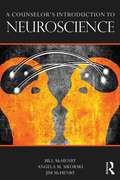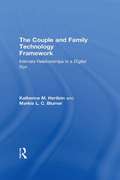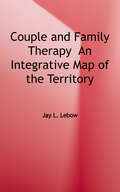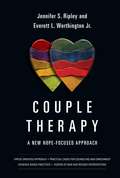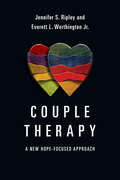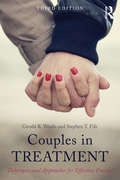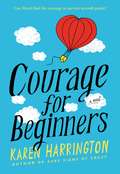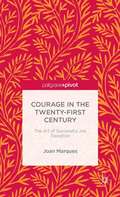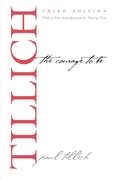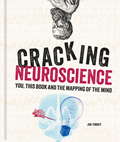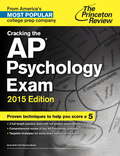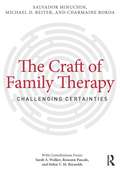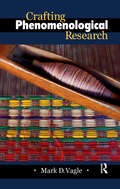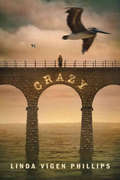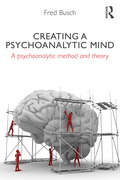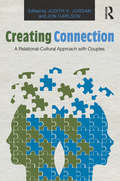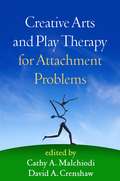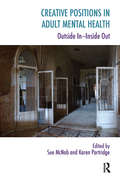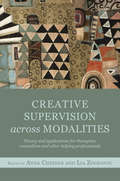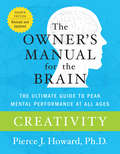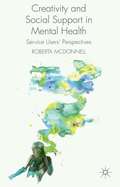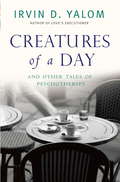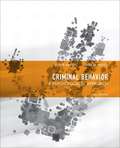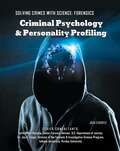- Table View
- List View
A Counselor's Introduction to Neuroscience
by Bill Mchenry Angela M. Sikorski Jim MchenryThe book is about the complexities of human brain and counselling. The authors have clearly explained the overlap of these two fields, that is easily comprehensible by a lay man.
The Couple and Family Technology Framework: Intimate Relationships in a Digital Age
by Katherine M. Hertlein Markie L. BlumerCouples and families worldwide have a constant electronic connection to others, a fact that is influencing the concerns and issues they bring to therapy. The authors of this resource help mental health practitioners to better deal with concerns such as online infidelity, online dating, internet addictions, cyber bulling, and many more by introducing the Couple and Family Technology (CFT) framework, a multi-theoretical approach that doesn’t require clinicians to change their preferred clinical approach. The CFT framework acknowledges the ways in which couples navigate their relationship with technology and a partner simultaneously, and it attends to, and in some cases incorporates the role of technology in therapeutic ways. Included in the authors’ discussion of how different technologies affect relationships is • a survey of what individuals’ motivations of usage are • an examination of the specific issues that emerge in treatment• a study of the risks particularly relevant to intimate relationships, and• an introduction of the first-ever technology-based genogram. They also examine technological usage across different developmental points in a couple’s lifespan, with attention given throughout to people from various cultural backgrounds. Along with the CFT framework, the authors also introduce a new discipline of family research: Couple and Family Technology. This discipline integrates three broad perspectives in family science and helps therapists maintain a systemic focus in assessing and treating couples where issues of the Internet and new media are problematic. Online resources can be accessed by purchasers of the book and include videos, additional case studies, glossary, and forms.
Couple and Family Therapy: An Integrative Map of the Territory
by Jay L. LeBowWhen selecting treatment for their clients, couple and family therapists are faced with a bewildering array of competing models. On closer inspection, the most effective of these approaches share common elements. This book surveys the state of the science and practice of today's couple and family therapy, looking beyond single models of treatment to instead present an integrative view of the field and its methods of practice. In describing how the field has evolved over the years, Jay Lebow articulates a core set of shared elements from which therapists can shape their own best methods of practice. His pragmatic view assumes that family functioning and problems are multilayered, and he advocates an individualized approach to each family based on what is occurring in the system. Areas of disagreement among couple and family therapists are described; so too are some of the ethical questions and areas of value conflicts that arise in this field of therapy. Readers will come away from this book with a clear sense of when couple and family therapy is the treatment of choice, what is known to work in therapy, and what is still debated.
Couple Therapy: A New Hope-Focused Approach
by Jennifer S. Ripley Everett L. WorthingtonFollowing the successful Hope-Focused Marriage Counseling, Jennifer Ripley and Everett Worthington Jr. have written a new book that expands upon their previous theoretical approach while describing in detail new practical interventions for couple counseling and enrichment. Weaving together classic cases outlined in Hope-Focused Marriage Counseling and over 75 brand new practical interventions, Ripley and Worthington root their practical examples in an even deeper theoretical framework and research in attachment and intimate bonds. Written with the couple counselor in mind, this book occupies a rare niche that is accessible not only to therapists and counselors but also to pastors and married couples alike. Both licensed clinical psychologists and experienced counselors, the authors base this follow-up work on the pillars of their Hope-Focused Couples Approach. The assessment tools included help facilitate improved marriages in many settings, and the combination of theory and real-life case studies easily integrates into the practices of professional counselors and researchers as well as into the lives of couples. Instructor Resources for classroom use include activities, video demonstrations of the authors in couples therapy, audio lectures, testbank, chapter summaries and a sample syllabus.
Couple Therapy: A New Hope-Focused Approach (Christian Association for Psychological Studies Books)
by Jennifer S. Ripley Everett L. Worthington Jr.Hope-Focused Marriage CounselingHope-Focused Marriage CounselingChristian Association for Psychological Studies (CAPS) Books explore how Christianity relates to mental health and behavioral sciences including psychology, counseling, social work, and marriage and family therapy in order to equip Christian clinicians to support the well-being of their clients.
Couples in Treatment: Techniques and Approaches for Effective Practice
by Gerald R. Weeks Stephen T. FifeThis third edition of Couples in Treatmentcontains all of the desirable qualities of the first and second editions, such as a practical approach and thorough coverage of the many different skills necessary to do couples " therapy well, a readable and accessible writing style, clear and easy to understand explanations, and numerous practical suggestions for improvement in professionals " ability to work with particular populations. Each chapter is revised and all references are updated to reflect current research and the growing body of knowledge about couples " therapy. As always, this book enhances practical applications of information through additional clinical examples, scenarios, and dialogues to illustrate the techniques and concepts presented in the chapters.
Courage for Beginners
by Karen Harrington<P>Twelve-year-old Mysti Murphy wishes she were a character in a book. <P>If her life were fictional, she'd magically know how to deal with the fact that her best friend, Anibal Gomez, has abandoned her in favor of being a "hipster." <P> She'd be able to take care of everyone when her dad has to spend time in the hospital. And she'd certainly be able to change her family's secret. <P>Seventh grade is not turning out the way Mysti had planned. <P>With the help of a hot-air balloon, her new friend Rama Khan, and a bright orange coat, can she find the courage to change?
Courage in the Twenty-First Century: The Art of Successful Job Transition
by Joan MarquesCourage outlines the art of moving forward both in professional and personal life. Marques offers a strategy for self-renewal in order to divulge the virtues and viewpoints to successfully move from one career to another.
The Courage to Be
by Paul TillichThe Courage to Be has become a classic of twentieth-century religious and philosophical thought. The great Christian existentialist thinker Paul Tillich describes the dilemma of modern man and points a way to the conquest of the problem of anxiety.
Cracking Neuroscience (Cracking Series)
by Jon TurneyFor so long, the brain was the great unknown of human biology; an evolved complex of cells, chemicals and electricity, which eluded even the understanding of its own grey matter. Now, in this comprehensive guide, the most complicated concepts from across the field of neuroscience - such as memory, addiction and mind mapping - are broken down into easily understandable bite-sized pieces, to give everyone the chance to understand their own brain. Includes sections on:-The anatomy of the brain-Neurons, synapses and axons - the building blocks of the brain-Differences in male and female development-Modern treatment of mental illness-The effects on the brain of different food and stimulants-Memory, senses, cravings-Fight or flight-Perception and sensation-The future of neuroscience
Cracking the AP Psychology Exam, 2015 Edition
by Princeton ReviewEVERYTHING YOU NEED TO SCORE A PERFECT 5. Equip yourself to ace the AP Psychology Exam with The Princeton Review's comprehensive study guide--including thorough content reviews, targeted strategies for every question type, and 2 full-length practice tests with complete answer explanations. We don't have to tell you how tough it can be to master AP Psychology--or how vital a stellar exam can be to making your college application competitive at the most selective schools. Written by the experts at The Princeton Review, Cracking the AP Physics C Exam arms you to take on the test with:Techniques That Actually Work.* Tried-and-true strategies to avoid traps and beat the test* Tips for pacing yourself and guessing logically* Essential tactics to help you work smarter, not harderEverything You Need to Know for a High Score.* Comprehensive content reviews for all test topics* Up-to-date information on the 2015 AP Psychology Exam* Engaging activities to help you critically assess your progressPractice Your Way to Perfection.* 2 full-length practice tests with detailed answer explanations* Practice drills at the end of each content review chapter* Detailed step-by-step explanations of sample questions to help you createyour own personal pacing strategy
The Craft of Family Therapy: Challenging Certainties
by Salvador Minuchin Charmaine Borda Michael D. ReiterFamily therapy trainees are inundated with a multitude of family therapy theories. They also have difficulty shifting from an individualistic view to one of seeing interactions and systems. How do therapists hone their own methods with all of these choices? And how do they learn how to best treat families with all of the focus being taken away from their clients and redirected instead on processes? Perhaps most importantly, how can they learn through an inductive process of exploring what has occurred during the therapeutic session? Veteran therapist and founder of Structural Family Therapy, Salvador Minuchin, goes back to basics with his two co-authors Michael D. Reiter and Charmaine Borda in The Craft of Family Therapy. In this book they teach readers basic communication and family therapy skills using some of Dr. Minuchin's most interesting and illuminating cases. Not only do readers re-learn basic techniques, such as reframing and joining, but they are treated to an in-depth commentary on each case, with Dr. Minuchin emphasizing the techniques he uses that allow him to refocus attention from the Identified Patient to the family as a whole. The book ends with three supervision transcripts from Dr. Minuchin's students, whose commentary illuminates the struggles, fears, and insecurities that new family therapists face and how they can overcome them. Each of these chapters ends with a consultation interview that Dr. Minuchin conducted with each supervisee's case family.
Crafting Phenomenological Research
by Mark D. VagleThis is an accessible, concise introduction to phenomenological research in education and social sciences. Mark Vagle outlines the key principles for conducting this research from leading contemporary practitioners, such as van Manen, Giorgi, and Dahlberg. He builds on their work by introducing his post-intentional phenomenology, which incorporates elements of post-structural thinking into traditional methods. Vagle provides readers with methodological tools to build their own phenomenological study, addressing such issues as data gathering, validity, and writing. Replete with exercises for students, case studies, resources for further research, and examples of completed phenomenological studies, this brief book affords the instructor an easy entrée into introducing phenomenology into courses on qualitative research, social theory, or educational research.
Crazy
by Linda Vigen PhillipsA compelling novel in verse about mental illness Laura is a typical fifteen-year-old growing up in the 1960s, navigating her way through classes, friendships, and even a new romance. But she&’s carrying around a secret: her mother is suffering from a mental illness. No one in Laura&’s family will talk about her mother&’s past hospitalizations or increasingly erratic behavior, and Laura is confused and frightened. Laura finds some refuge in art, but when her mother suffers a breakdown after taking painting back up again herself, even art ceases to provide much comfort. Eloquent and compelling, this powerful novel-in-verse tackles complex themes in a way that will have readers rooting for Laura to find the courage to get the answers she needs.
Creating a Psychoanalytic Mind: A psychoanalytic method and theory
by Fred BuschBringing a fresh contemporary Freudian view to a number of current issues in psychoanalysis, this book is about a psychoanalytic method that has been evolved by Fred Busch over the past 40 years called Creating a Psychoanalytic Mind. It is based on the essential curative process basic to most psychoanalytic theories - the need for a shift in the patient's relationship with their own mind. Busch shows that with the development of a psychoanalytic mind the patient can acquire the capacity to shift the inevitability of action to the possibility of reflection. Creating a Psychoanalytic Mind is derived from an increasing clarification of how the mind works that has led to certain paradigm changes in the psychoanalytic method. While the methods of understanding the human condition have evolved since Freud, the means of bringing this understanding to patients in a way that is meaningful have not always followed. Throughout, Fred Busch illustrates that while the analyst's expertise is crucial to the process, the analyst's stance, rather than mainly being an expert in the content of the patient's mind, is primarily one of helping the patient to find his own mind. Creating a Psychoanalytic Mind will appeal to psychoanalysts and psychotherapists interested in learning a theory and technique where psychoanalytic meaning and meaningfulness are integrated. It will enable professionals to work differently and more successfully with their patients.
Creating Connection: A Relational-Cultural Approach with Couples (Routledge Series on Family Therapy and Counseling)
by Jon Carlson Judith V. JordanRelational-Cultural Therapy (RCT) is developed to accurately address the relational experiences of persons in de-valued cultural groups. As a model, it is ideal for work with couples: it encourages active participation in relationships, fosters the well-being of everyone involved, and acknowledges that we grow through and toward relationships throughout the lifespan. Part and parcel with relationships is the knowledge that, whether intentionally or not, we fail each other, misunderstand each other, and hurt each other, causing an oftentimes enduring disconnect. This book helps readers understand the pain of disconnect and to use RCT to heal relationships in a variety of settings, including with heterosexual couples, lesbian and gay couples, and mixed race couples. Readers will note a blending of approaches (person-centered, narrative, systems, and feminist theory), all used to change the cultural conditions that can contribute to problems: unequal, sometimes abusive power arrangements, marginalization of groups, and rigid gender, race, and sexuality expectations. Readers will learn to help minimize economic and power disparities and encourage the growth of mutual empathy while looking at a variety of relational challenges, such as parenting, stepfamilies, sexuality, and illness. Polarities of “you vs. me” will be replaced with the healing concept of “us.”
Creative Arts and Play Therapy for Attachment Problems
by Cathy A. Malchiodi David A. CrenshawThis book vividly shows how creative arts and play therapy can help children recover from experiences of disrupted or insecure attachment. Leading practitioners explore the impact of early relationship difficulties on children's emotions and behavior. Rich case material brings to life a range of therapeutic approaches that utilize art, music, movement, drama, creative writing, and play. The volume covers ways to address attachment issues with individuals of different ages, as well as their caregivers. Chapters clearly explain the various techniques and present applications for specific populations, including complex trauma survivors.
Creative Positions in Adult Mental Health: Outside In-Inside Out (The Systemic Thinking and Practice Series)
by Sue McNab Karen PartridgeThis book presents cutting edge developments in Adult Mental Health through the presentation of creative and innovative applications of systemic theory to practice. The first section deconstructs the medical model with some of the current beliefs and practices shaping services whilst placing adult mental health in a wider social and political context. The second half of the book showcases good practice from the field. At either end of the volume "bookends" invite current clients and staff to write about their experiences with the aim of bringing a powerful personal context into the work. We intend to create a shift from third person objectivity to a first person experience as a political act which flows through the book.
Creative Supervision Across Modalities: Theory and applications for therapists, counsellors and other helping professionals
by Cath Wakeman Céline Butté Eleni Ioannidou Denise Mchugh Anna Chesner Amanda Strevett-Smith Lia Zografou Fiona Hoo Hannah Sherbersky Jane LeachCreative methods can bring depth and new perspectives to the supervision process. This book proposes that a firm understanding of supervision theory is the vital foundation to utilising the power of creativity in reflection and learning, and demonstrates that these creative approaches are applicable across disciplines, providing useful reflective tools across and beyond the arts therapies. Part One of the book provides a theoretical approach to supervision, with a presentation and discussion of the philosophy, theory and place of creative technique. Part Two demonstrates the fluency of creative approaches to supervision with examples of application within different fields, including dramatherapy, psychodrama, family therapy, art therapy, psychoanalytic psychotherapy, dance and movement therapy and church ministry, provided by experienced practitioners from within those fields. Based in the practice and philosophy of the Creative Approaches to Supervision Diploma course run by the editors and taught at the London Centre for Psychodrama Group and Individual Psychotherapy, this book is a comprehensive resource for anyone with an interest in supervision across the caring and educational disciplines.
Creativity: The Owner's Manual
by Pierce HowardCutting-edge, user-friendly, and comprehensive: the revolutionary guide to the brain, now fully revised and updatedAt birth each of us is given the most powerful and complex tool of all time: the human brain. And yet, as we well know, it doesn't come with an owner's manual--until now. In this unsurpassed resource, Dr. Pierce J. Howard and his team distill the very latest research and clearly explain the practical, real-world applications to our daily lives. Drawing from the frontiers of psychology, neurobiology, and cognitive science, yet organized and written for maximum usability, The Owner's Manual for the Brain, Fourth Edition, is your comprehensive guide to optimum mental performance and well-being. It should be on every thinking person's bookshelf. What are the ingredients of happiness? Which are the best remedies for headaches and migraines? How can we master creativity, focus, decision making, and willpower? What are the best brain foods? How is it possible to boost memory and intelligence? What is the secret to getting a good night's sleep? How can you positively manage depression, anxiety, addiction, and other disorders? What is the impact of nutrition, stress, and exercise on the brain? Is personality hard-wired or fluid? What are the best strategies when recovering from trauma and loss? How do moods and emotions interact? What is the ideal learning environment for children? How do love, humor, music, friendship, and nature contribute to well-being? Are there ways of reducing negative traits such as aggression, short-temperedness, or irritability? What is the recommended treatment for concussions? Can you delay or prevent Alzheimer's and dementia? What are the most important ingredients to a successful marriage and family? What do the world's most effective managers know about leadership, motivation, and persuasion? Plus 1,000s more topics!
Creativity and Mental Illness
by James C. KaufmanAre creative people more likely to be mentally ill? This basic question has been debated for thousands of years, with the 'mad genius' concept advanced by such luminaries as Aristotle. There are many studies that argue the answer is 'yes', and several prominent scholars who argue strongly for a connection. There are also those who argue equally strongly that the core studies and scholarship underlying the mad genius myth are fundamentally flawed. This book re-examines the common view that a high level of individual creativity often correlates with a heightened risk of mental illness. It reverses conventional wisdom that links creativity with mental illness, arguing that the two traits are not associated. With contributions from some of the most exciting voices in the fields of psychology, neuroscience, physics, psychiatry, and management, this is a dynamic and cutting-edge volume that will inspire new ideas and studies on this fascinating topic.
Creativity and Social Support in Mental Health
by Roberta McdonnellThis book weaves together service users' lived experiences of mental health recovery and ideas about how creative activities such as art, music, and creative reading and writing can promote it, particularly within social and community settings.
Creatures of a Day: And Other Tales of Psychotherapy
by Irvin YalomWhat makes life worth living? What can we do to lead meaningful lives? And how do we confront our inevitable end? In his long career, eminent psychotherapist and author Irvin Yalom has pressed his patients and readers to grapple with life's two greatest challenges: that we all must die, and that each of us is responsible for leading a life worth living. In Creatures of a Day, he and his patients face the difficulty of these challenges. Although these people have come to Yalom seeking relief, recognition, or meaning, he and they discover that such things are rarely found in the places where we think to look. Like Love's Executioner and Yalom's other writing, Creatures of a Day provides an intelligent, compassionate, yet still unflinching look at the human soul and all the pain, confusion, and hope that go with it. The power of these stories is amplified by Yalom's reflections on his own life as he reckons with its inevitable end. Suffused with humor, great artistry, and a profound humanity, Creatures of a Day lays bare the necessary task we each face, each day, to make our own lives meaningful.
Criminal Behavior: A Psychological Approach (Tenth Edition)
by Curt R. Bartol Anne M. BartolA comprehensive psychological approach to criminal behavior. Accurate, researched-based, contemporary, and comprehensive: Criminal Behavior: A Psychological Approach, Tenth Edition, builds on the excellence established in previous editions. The text offers a detailed look at crime, what may lead to it, and how criminal behavior may be prevented, all from a psychological perspective. Focusing on serious crimes, particularly those involving violence, Criminal Behavior offers a comprehensive look at this complex field with effective and engaging material that has been classroom-tested for over thirty years.
Criminal Psychology & Personality Profiling (Solving Crimes With Science: Forensics #12)
by Joan EsherickTelevision programs and feature films present criminal psychology and profiling as a blend of psychic visions, supernatural intuition, and evidence analysis. The reality, however, is quite different. Using true-crime case studies from history and the present, examples from current and former FBI profilers, and informative sidebars, Criminal Psychology & Personality Profiling explores the many roles and responsibilities criminal psychologists and profilers fill as they support other professionals in addressing crime and its consequences. From crime-scene analysis to offering expert testimony in court, these behavioral scientists offer an understanding of crime, the criminal mind, and those affected by crime.
